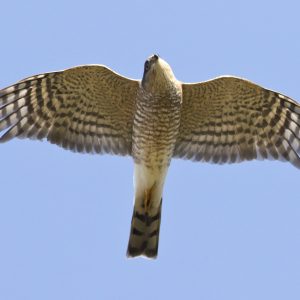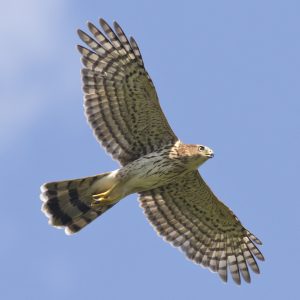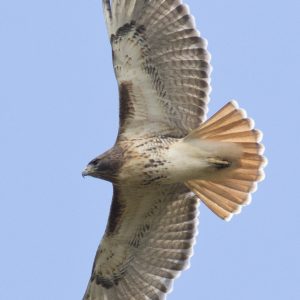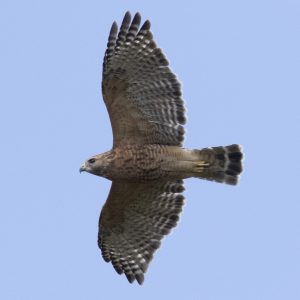By Joe Sebastiani, Director of Adult Engagement
Raptor Photos by David Brown, Ashland Hawk Watcher
The Ashland Hawk Watch is set to start up for the 17th fall in a row. September 1st is opening day of hawk watching season at Ashland Nature Center. Birders, raptor aficionados, and visitors to Ashland look forward to this day all summer, and it marks the beginning of 3-months of scanning the skies daily to count hawks on their journey south. Ashland Hawk Watch is a joint project of Delaware Fish and Wildlife, Delaware Ornithological Society, and Delaware Nature Society.
Why are we counting hawks?
Why are we counting hawks? Ashland Hawk Watch is a raptor monitoring station that collects data as part of a larger Western Hemisphere effort to gauge raptor population shifts and migration routes over time. Over 150 stations such as Ashland operate in Canada, the U.S., and Central America. The Hawk Migration Association of North America holds, analyzes, and uses the date collected from all of these monitoring sites.
Once again, David Brown will be the official Hawk Watcher. This is his seventh autumn at Ashland Hawk Watch, and we are excited to have him back. We invite you to visit Ashland Hawk Watch to learn about raptors from David.
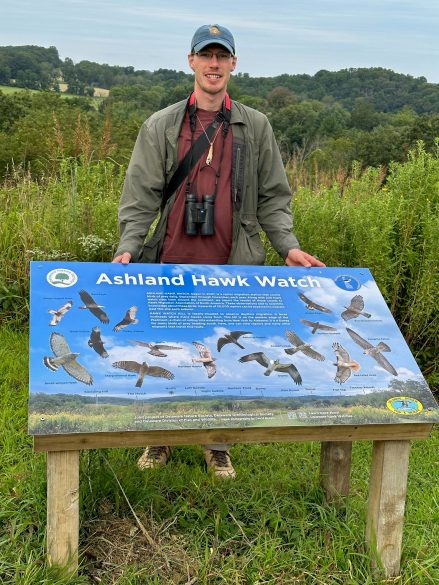
What can you expect to see at Ashland Hawk Watch?
First, you need to walk from the parking lot to the top of Hawk Watch Hill. This is a short but steep 1/4-mile hike. The scenery at the top is one of the better views in Delaware. Here, crowded roads, housing developments, and strip malls are replaced by rolling hills covered with forest and meadow. That in itself is a reason to visit Ashland Hawk Watch.
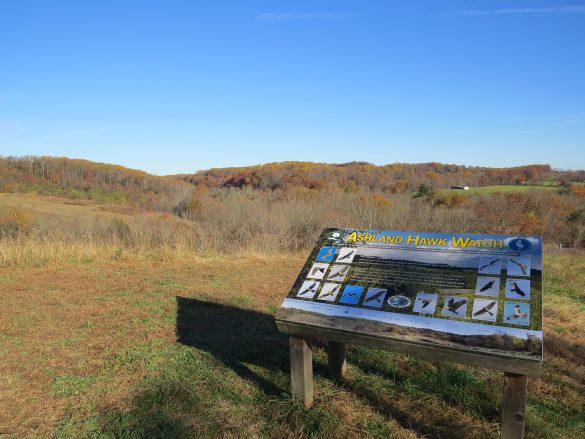
Ashland is located along the eastern edge of the Piedmont, the foothills of the Appalachian Mountains. These hills parallel the east side of the Appalachians from New York City to Alabama. This is important because we believe that raptors use these hills as a visual roadway south in the fall as they journey to their wintering destinations.
Raptors can be seen at Ashland Hawk Watch any time during the day, however weather dictates a lot. In September on a warm day with no wind, flights usually don’t begin until it heats up, sending warming air skywards in something called a thermal. Raptors like to ride thermals to get lift. Hawks get very high in the sky on days like this, so it is easier to see birds in morning and late-afternoon.
On a breezy day, raptors get lift from the wind, so migration is more spread out during the day. If a cold front passes, the few days afterwards are typically very good for raptor migration.
Below is a list of what to expect during fall raptor migration and when birds come through. Bring your binoculars, (or borrow a pair at the Hawk Watch), snacks, and look for some of these amazing birds.
The Osprey is a fish-eating raptor that migrates through our area mainly in September. Most migrate along the immediate coast, but we see plenty at Ashland too. Consider it your lucky day if one flies by carrying a fish!
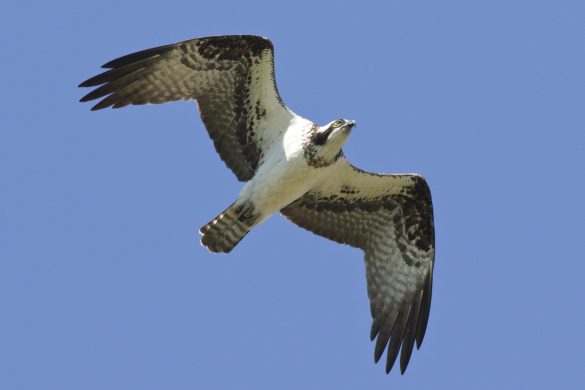
Bald Eagles migrate past Ashland throughout the fall. On average, we see about 10 per day that are migrating. There are usually some resident eagles flying overhead as well.
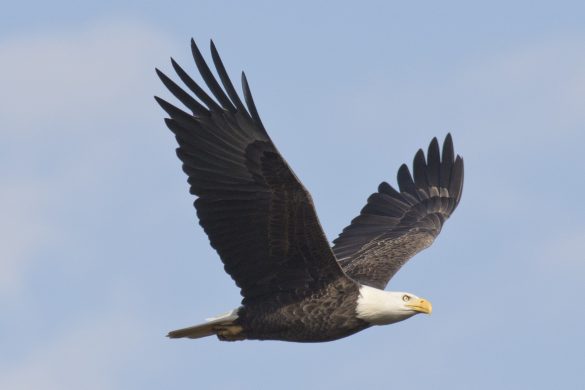
The American Kestrel is our smallest raptor, about the size of a Blue Jay. These small falcons migrate in September and early October. We usually see 300 or 400 come through over that time. This was once a very common bird that has declined drastically in the Northeast.
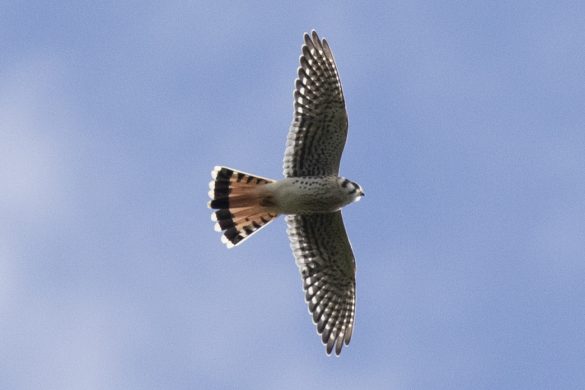
The Merlin is another small falcon that migrates through Ashland early in the season. Merlin migration lasts into November, unlike the Kestrel. On a good day, we might expect to see 3 or 4 Merlin, so they aren’t as numerous as Kestrels. Merlins are expanding their breeding range south and are now nesting in Pennsylvania.
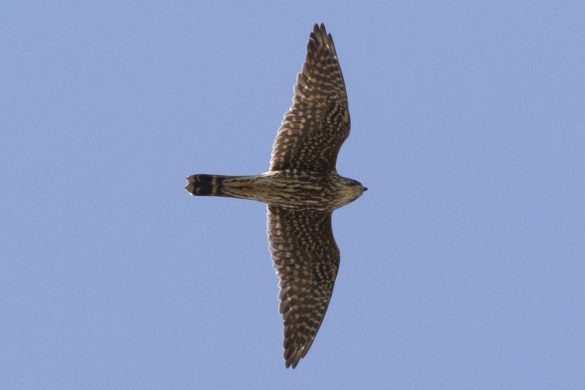
The Peregrine Falcon is the largest falcon we see at Ashland. Lightning quick in a dive, we typically see them flying straight past on their way south. This is a bulky, heavy-looking falcon that was at one point an endangered species. They are a success story, much like the Bald Eagle and they are now relatively common. There are a few pair that nest in Wilmington. One pair nests on a downtown high-rise, and usually one or two more pair nest on the Delaware Memorial Bridge or the Reedy Point Bridge. We usually only see 20 or 25 of them in a season at Ashland between mid-September and mid-October.
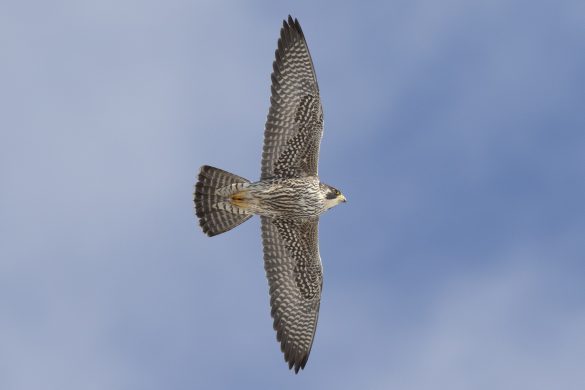
Perhaps the biggest spectacle of migration at Ashland is that of the Broad-winged Hawk. Between September 15 to September 25 or so, we typically see large flocks moving through. These swirling flocks, called “kettles” sometimes contain dozens or even hundreds of individuals moving south. On really big days, several thousand Broad-winged Hawks can be seen coming through in a matter of hours. This is something you don’t want to miss!
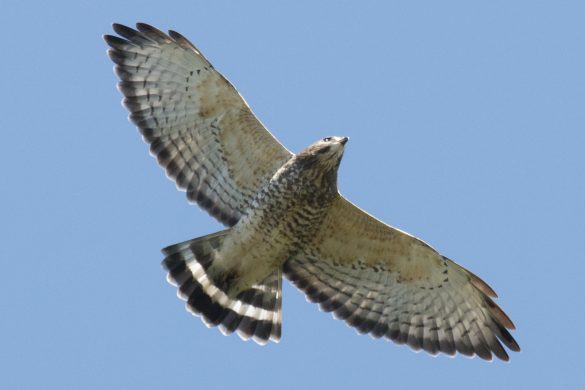
Northern Harrier is a raptor that comes through all fall, although in small numbers. We normally see the brown females and young males, but sometimes adult males come past. These are whitish-gray hawks and are always a crowd-pleaser.
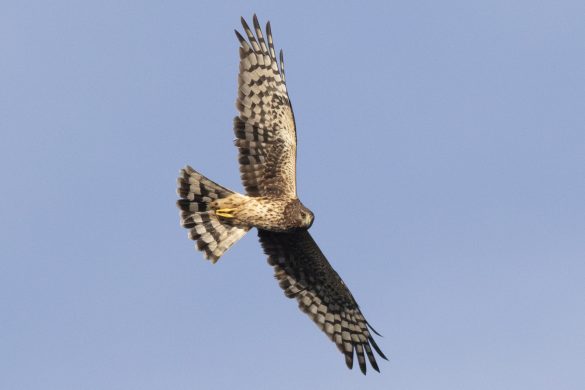
Sharp-shinned Hawks (left) and Cooper’s Hawks (right) begin moving through in late September and are strong migrants through October. These bird-eating raptors are similar in appearance, but overall, Sharp-shinned Hawk passes in greater numbers. They are a staple of October Hawk Watching. Sharp-shinned has a squared or notched tail and more “wristed” wings. Cooper’s has a more rounded tail and flatter-fronted wings, and is typically a bigger bird than Sharp-shinned.
During October and November, we see Red-tailed Hawks (below left) and Red-shouldered Hawks (right) in good numbers. These are both common species of bulky raptors that eat rodents, frogs, snakes, and a variety of foods. They both nest in Delaware commonly, so sometimes it is tough to determine if we are looking at a local nesting bird or a migrant. Nonetheless, Ashland is one of the best places on the continent to see Red-shouldered Hawks. We seem to get more of them passing through each year than any other Hawk Watch. Red-tailed Hawks are the most common type of hawk in the state all year round.
Golden Eagle is a prized bird at any Hawk Watch. Typically we see around 10 per season, and they almost all come through in November. This is a large, impressive eagle that lives across the northern hemisphere. The ones that pass Ashland nest in wild, remote parts of eastern Canada. Many people come to Ashland each November just to try their luck to see these birds.
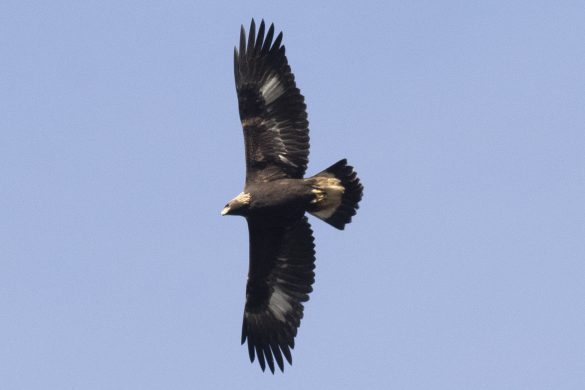
When to visit Ashland Hawk Watch
Ashland Hawk Watch is open daily, generally 9 am to 4 pm, September 1 through November 30. Park at the main Ashland Nature Center lot, 3511 Barley Mill Road, Hockessin, DE. Follow the signs to Hawk Watch Hill. Enjoy the view and the birds! We hope to see you this fall.
